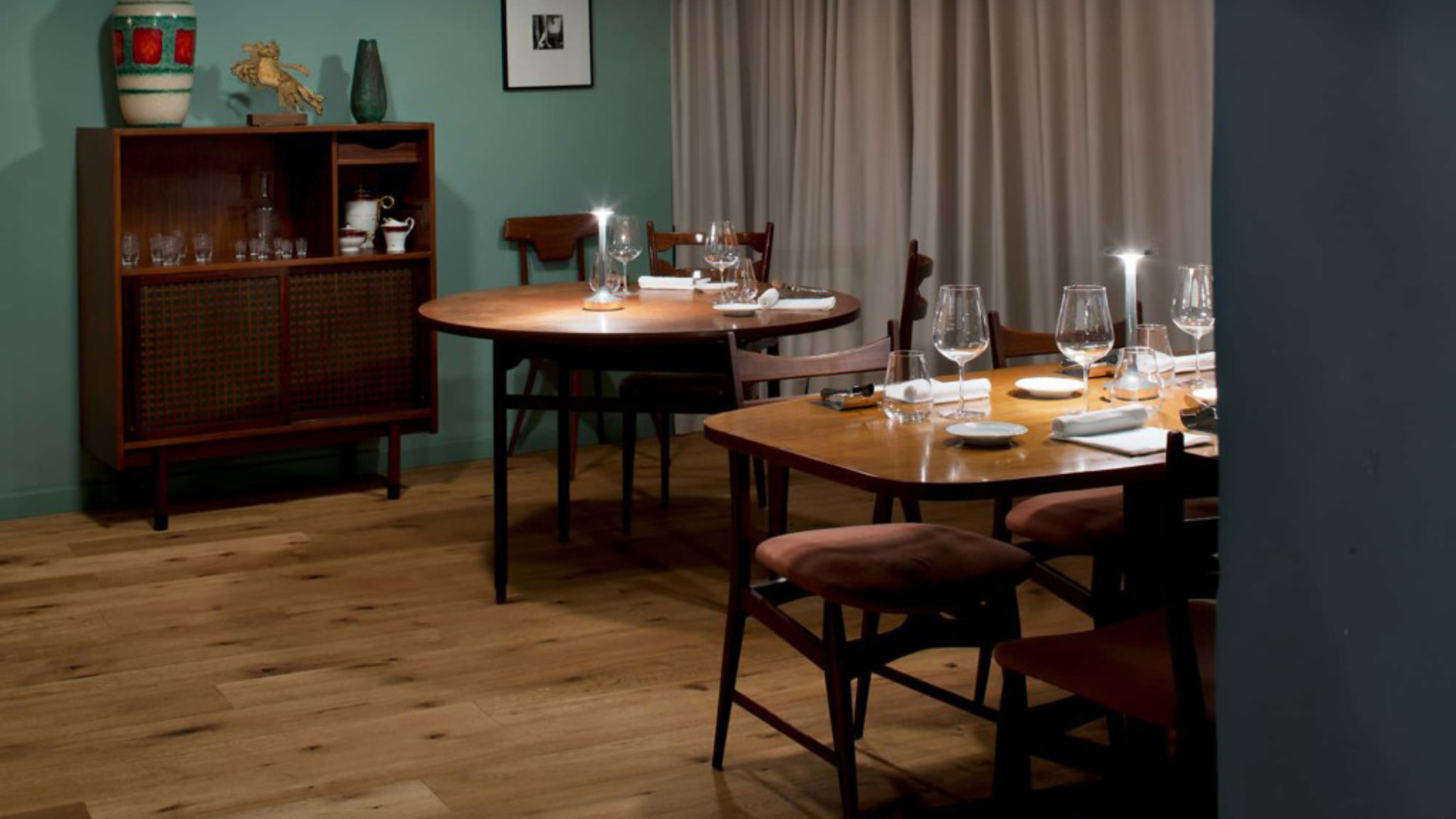Architectures
DINA RESTAURANT
City: GUSSAGO
|Year: 2018
|Status: Completed
Dina is the new restaurant of Alberto Gipponi in Gussago (province of Brescia) in the heart of Franciacorta, the area of production of the famous sparkling wine which carries its name. Each of Alberto Gipponi’s dishes is a celebration of a part of his life and the manner in which he interprets it.
Eremo has been responsible for the brand creation, the press releases, the concept and interior design.
Dina is a story in its own right, of experience, of taste and of a tale to tell. Each room has been conceived in terms of a unique ambience and where diverse experiences can be lived.
The communication and branding project is based on dedication to grandmother Dina, on the concept of home and on the strong and distinctive narrative sense of Alberto Gipponi, he proposing every dish as a story to be told and an experience to be lived.
The concept of home as related to the memory of grandmother Dina is interpreted via the use of the cypress pink colour and serves as a contrast with the other two corporate colours of egg yellow and warm blue, these vibrant colours which together with the cypress pink represent shades of masculinity and femininity as in the chef’s cuisine itself.
Eremo has wanted to reinterpret and give a new sense to the concept of diners leaving their comments in a book.
At Dina one will see a collection of books, all identical but with a different number on the cover. Each numbered book will be placed on the corresponding numbered table and so give the possibility that comments will build up to make the story of the individual table. In this way it is intended that a connection is made between each individual table and the persons who over time will sit there. Each table will have a story to itself, and the books together will tell the story of Dina as a whole.
The menus are printed on rough paper and are bound with a simple black metal spiral so they can be regularly updated. The menu cover is a single sheet folded on itself and in the middle there is a piece of thicker black card which draws an association with the black of the room where the work of Monk is to be found. Each menu is printed with foiled edges in different colours. Inside the menu the three corporate colours appear, creating a gradient which represent different grades of taste.
The entrance is illuminated by a neon light, similar as in the opera “Until then if not before" by the famous artist Jonathan Monk, leitmotiv of the chef.
The second room is the “Laboratorio", an alchemic experience where the chef proposes a fixed menu of total and complete innovation. Eremo has wanted to create a type of small Sistine Chapel of taste where the guest can immerse oneself in the joys to be had. On entering the room, passing through red velvet curtains as if in a theatre, one discovers to be in a small room where on the barrel vault there is a representation in labrynth form dedicated to the world of taste, it the work of the illustrator Sarah Mazzetti.
In the room next to the “Laboratorio” there is a Lounge, a place of relaxation and tranquillity. It is a moment to feel at home, just like the welcome of ‘Grandma’ Dina, she the grandmother of the chef and the person who was the inspiration behind the adventure that was to unfold. The walls are a dusty blue and the paper is of striped parades, and here is kept the book collection of Dina, books which have marked the life of Alberto Gipponi and Dina herself.
Moving on from the Lounge one comes to the Garden, a space which reinterprets the veranda, laid out to host plants and flowers in a warm ambience made up of green walls and striped paper. The furniture itself is warm in style and there is the pleasant drift of aromas of the plants and the appetising aromas arriving from the kitchen.
The final room is the Tavern, it like a tunnel of bare stone which accommodates tables, one different from another, and which rest on the pavement of opaque cement. The appearance is as if there were a swimming pool on which the tables float. The room is set off in fine style by the 2097/50 lamp of Gino Sarfatti.
Photo credits: Matteo Cremonini, Chiara Cadeddu










